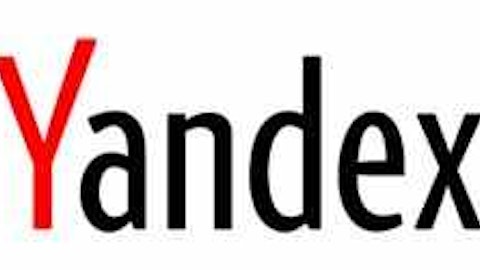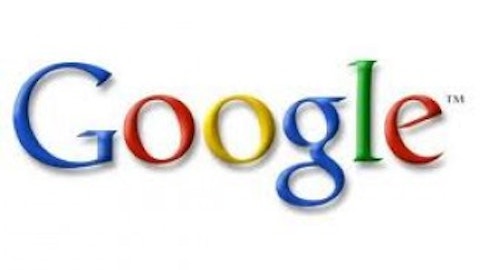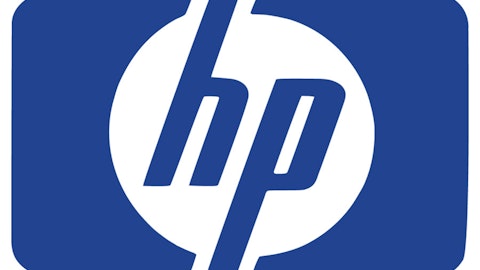Some technology companies have been labeled “old tech.” The three companies that I’ve heard this most about are Intel Corporation (NASDAQ:INTC), Microsoft Corporation (NASDAQ:MSFT), and Cisco Systems, Inc. (NASDAQ:CSCO). These three former darlings of the investment world have been criticized for not adapting fast enough, and not sharing their wealth with shareholders. While Cisco has enjoyed a decent run recently from better results and a higher dividend, Microsoft and Intel seem somewhat stuck. These companies are seemingly attached at the hip, and ironically they may be about to help each other yet again.
Investors who are bearing on Intel would say, ARM Holdings plc (ADR) (NASDAQ:ARMH) seems to own the mobile market for processors. Intel’s size may not matter. While it’s true Intel’s move toward mobile has been slow, don’t count out the chip king yet.

I own an iPad and I love it, however when I need to do real work, I use my laptop. If PC manufacturers could have exploited the “Intel inspired” Ultrabook prior to the iPad, I’m not sure the tablet market would be as big as it currently is. Apple’s iPad and Samsung’s Galaxy lineup dominate the tablet market. The fact that both use an ARM licensed chip design, and neither runs Windows has to be bad news right?
Not so fast, Intel Corporation (NASDAQ:INTC) and Microsoft dominate the Ultrabook scene, and as manufacturers dream up new ways to design these devices, the line between tablet and laptop is already becoming blurry. With companies like ASUS, Dell Inc. (NASDAQ:DELL), Hewlett-Packard Company (NYSE:HPQ), Lenovo, and others coming up with less than 3 lb. Ultrabook designs, this concept is almost certain to take tablet market share.
Don’t Count This Out Yet
You would think the start button was a national monument for all of the talk of it being removed in Windows 8. In truth, Windows 8 is a step Microsoft had to take, and Intel is more than happy to be along for the ride. Windows 8’s ability to be used on PCs, tablets, and smartphones is something only Microsoft offers at the current time.
While Windows 8 is a drastic change, I wouldn’t go betting against this operating system just yet. First, Microsoft reported a 24% increase in revenue from the Windows division in their current quarter. Second, with 60 million licenses sold, there are a whole lot of people already using the system. Third, Microsoft’s Surface tablet is designed to show customers what the Windows 8 experience is supposed to be like. The fact that Intel resides inside the Surface Pro, and many other Windows 8 tablets is great news for the company.
The Future
Even if Windows 8 and the Ultrabook breathe new life into Intel and Microsoft sales, both companies need to win in mobile. The sheer size of the mobile market means the opportunity is too large to ignore.
ARM is the big dog when it comes to mobile chips, and it seems imperative that Intel find a way to compete more effectively. While Intel is both a chip designer and manufacturer, ARM tends to license its designs. This accounts for the fact that ARM’s recent gross margin was 94.77% compared to Intel’s gross margin of 58%. While the difference in gross margin is something Intel can’t easily adjust, there is one thing Intel simply must do more of.
One of the keys to success in the technology industry over the long-term is spending on research and development. Intel spends as much on R&D in a quarter, as ARM makes in revenue in six months. However, I’m suggesting Intel needs to spend more. As a percentage of sales, ARM spends 28.19% on R&D. By comparison, Intel spent 19.51% in the current quarter. Intel is already running the race from behind and can’t afford to let ARM keep the lead.
In the smartphone arena, Intel is beginning to make inroads. The company has smartphones with Intel chips produced by Acer, Lenovo, Motorola Solutions Inc (NYSE:MSI), and others, but most of these are available in countries like Thailand, India, China, the U.K. and elsewhere. Since many experts believe smartphone growth will be most robust internationally in the future, this international focus could benefit Intel more quickly than trying for one big win in the U.S. marketplace.
Conclusion
The good news for Intel investors is the combination of the Ultrabook and continued adoption of Windows 8 should help the company’s PC division. Intel’s inclusion in the Surface Pro is a step in the right direction, but the company needs to find a way into the tablet market in a bigger way. While Intel is entering the smartphone market slowly, they need to push forward their mobile chip design so that manufacturers don’t have a choice, but to choose Intel to be inside.
While ARM is the current king in mobile, the stock already reflects this exuberance with a forward P/E ratio of over 51. Though ARM is expected to grow fast at over 21% in the next few years, I’m afraid investors have gotten a little ahead of themselves. While investors wait for Intel, the stock looks like a very good value. The shares yield over 4.25%, and currently sell for a discount to their expected 12.3% EPS growth rate. Even Microsoft can’t claim this, as the king of software boasts a yield less than Intel, and a slower expected growth rate. In the end, there are three trends that should push Intel forward, and patient investors stand to reap the rewards.
The article This Company Needs These 3 Trends To Take Hold originally appeared on Fool.com and is written by Chad Henage.
Copyright © 1995 – 2013 The Motley Fool, LLC. All rights reserved. The Motley Fool has a disclosure policy.





